Text


Gert Gagelmann was a graduate of the Reimann School for Arts and Crafts (Die Reimann-Schule in Berlin und London 1902-1943). Which was a Jewish company for international art and design training until its destruction by the Hitler regime.
As explained in the English newspaper clipping above, the school was forced to close and move to London. This quote from the US Holocaust Museum, gives further explanation:
“Joseph Goebbels was the Nazis’ leading propagandist. After the Nazi takeover of power in 1933, he also headed the ministry of culture and led the campaign to drive Jews out of journalism, cinema and the performing arts.
“Aryanization” (in German, Arisierung) refers to the transfer of Jewish-owned property to non-Jews in Nazi Germany from 1933 to 1945. It aimed to transfer Jewish-owned economic enterprises to “Aryan,” that is, non-Jewish ownership.”
0 notes
Text


This Gagelmann print was offered for sale in an on-line auction. As is the case as I believe with all of his erotic works, it was unsigned. On the reverse side of each of the two watercolors, #10 and #12, it had these words written in pencil. The Google translate app comes up with "Sovasion," but it isn't a word in English, French, or German that I can find. Anyone have any ideas of the correct meaning?
7 notes
·
View notes
Text

This one of the many erotic watercolors, unsigned but which may be attributed to Herr Gagelmann. This example illustrates elites of 1930s Germany shopping for enema paraphernalia. The term klismaphilia was coined in 1973 by Joanne Denko, an early investigator in this field, concerning enema as a sexual preference.
3 notes
·
View notes
Text

This wonderfully clear photo (c.1900) is of Halle, Sachsen-Anhalt (Saxony-Anhalt), Deutschland, where Gerhard Georg August Gagelmann was born, 24 Apr 1902.
0 notes
Text

In the Nr. 7, 1931, G. Gagelmann cover of Przegląd Mody (Polish Modenschau), we see the white bangle. These bracelets could be meant to be ivory a material both available and affordable for the wealthy elite. However, ‘Bakelite’ was a very popular synthetic material of that era. Coco Channel and Elsa Schiaparelli used it for their costume jewelry collections. Iconic of the period: the Nazis used Bakelite for pistol grips, machinegun stocks, field telephones, and a myriad of applications.
1 note
·
View note
Text

Many similar props used in Gagelmann's magazine illustrations are also found in the erotic watercolors.
4 notes
·
View notes
Text

The erotic works of Gert Gagelmann have long been wrongly attributed and plagiarized under the name of ‘Julie Delcourt.’ I recently discovered the “Camille” website, offering compelling proofs of Herr Gagelmann as the artist creating the well-known, erotic and enema-themed watercolors.
The links to Camille’s pages are given here; https://www.camillemm.com/julie-delcourt-rumeur-curiosa/ https://www.camillemm.com/delcourt-gaglemann/ They offer comparisons of Gagelmann’s style and techniques with examples from the erotic watercolor series, with his known examples from the WWII German postcard series, “Frauen Schaffen fur Euch,” (Women Working for You).
I was following a similar approach in my own research before the COVID pandemic. I used examples of Herr Gagelmann’s magazine illustrations obtained through the assistance of the ‘Staatsbibliothek zu Berlin’ (Berlin City Library). Another main source, used with permission, was from Herr Martin Korsitzke’s artdeco-boulevard.de (Art Deco Boulevard). His examples were from the 1930s editions of “Modenschau” magazine. Herr Korsitzke also suggested I check with the Polish National Library as a source for “Przegląd Mody,” the Polish editions of “Fashion Show” magazine.
These known and signed illustrations were compared to erotic/enema-themed art. In many examples where Gagelmann uses similar props in his compositions. One of the key “tells” pointed out by the “Pillowbook Girl” on her site, was Gagelmann’s use of white bracelets. These often worn singularly, or in pairs by the women and girls portrayed in the erotic art, the post card series, in one example on a Modenschau cover.
Notice in the examples above the similarities with the women's faces, the handling of the hair shading, and the two white bangles each of them wears.
5 notes
·
View notes
Text

“Enamels” by Gert Gagelmann
[I believe this article on page 105 of die Deutsche Elite, 1925, shows Herr Gagelmann was fine writer in addition to his artistic talents. I hope I've adequately conveyed his eloquence in this translation.]
When one of those mystical Egyptian kings prepared a princely gift, he donated a magnificent vessel made of gold and enamel as his most valuable gift. The magic of this delicious smelting works was so strong that even queens chose the enamel for their favorite jewelry.
It’s remarkable how long it took for this singular technique to migrate to Western Europe. It took thousands of years to find its way. Only the masters of German goldsmithing in the 16th century discovered the infinite charm of enamel and created their most beautiful structures from the new material.
With a slight shiver of silent delight, I see the old enamel picture that I once found in a corner of the St. Stephen's Church in Vienna. It was a portrait of a holy woman. Rich, deep colors wrapped fervently with tender, lighter tones and piled up to glittering reflections that broke softly in the light of the church windows. The eyes of the saintly woman rested as if they were so special. That deep, gentle pair of eyes, who’s innermost being seemed to be embedded in the gold. That wan, barely flushed face, all pale opal framed with the brilliant abundance of her gold hair.
Nothing tangible, nothing realistic in the picture. All lines formed the language of a strict, almost somewhat stiff style. I stepped back from the picture, self-conscious. Later I came to understand the expression of the glass picture, which had received its strange hues through the melting of differently colored glasses.
How wrong we are to forget this extremely appealing technique so quickly. Only a few of our artists try to save this legacy of a brilliant time of high culture and full of mysticism into the gray of our time. – Will the beautiful women of our day once again make enamel their favorite jewelry like the queens of the long-destroyed royal city once did? –
2 notes
·
View notes
Text
Women Working for You

This is the obverse of "Die Fernsprechbeamtin" Erich Gutjahr Bildverlag, publisher. It's my understanding that military personnel could send these cards without postage.
1 note
·
View note
Text
"Die Fernsprechbeamtin"

"Frauen Schaffen für Euch" (Women Working for You) was a series of postcards, based on the work of several artists including Gert Gagelmann, and issued in Germany during WWII. His monogram in the lower right-hand corner shows a date of 1943, depicting telephone operators.
4 notes
·
View notes
Text
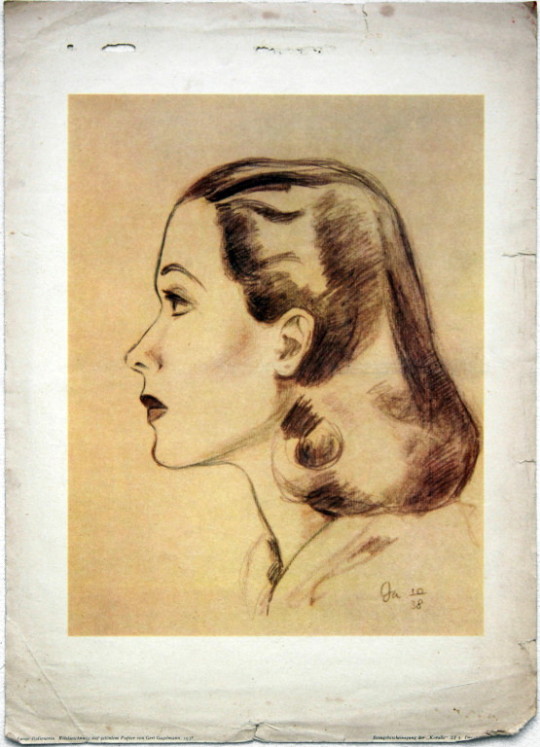
This drawing by Gerd Gagelmann called "The Italian Girl" was found on a Polish art auction site. The artist's signature mark "Ga" with the date 10/38 is in the lower right-hand corner. During his career, he used a number of variations of this mark. His distinctive handling of her hair and highlights can be noted in his illustrations and especially the erotic watercolor produced.
4 notes
·
View notes
Photo
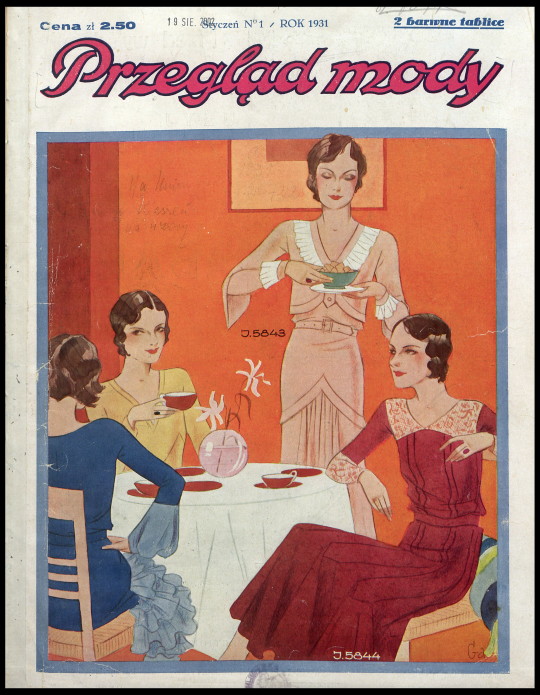
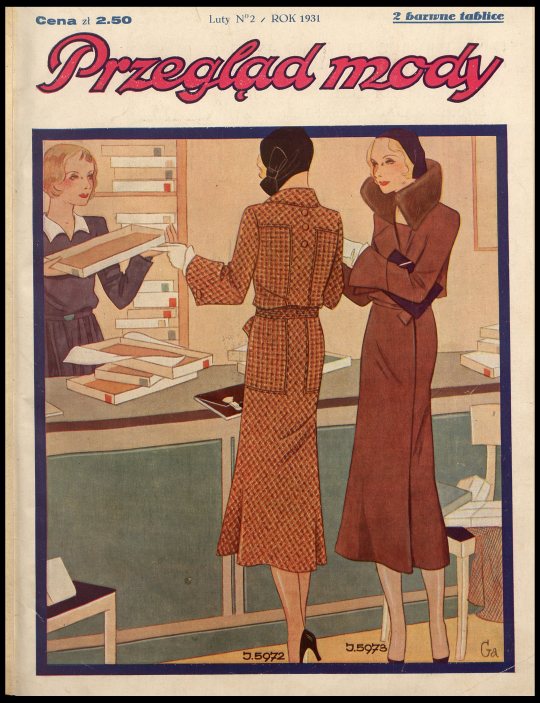


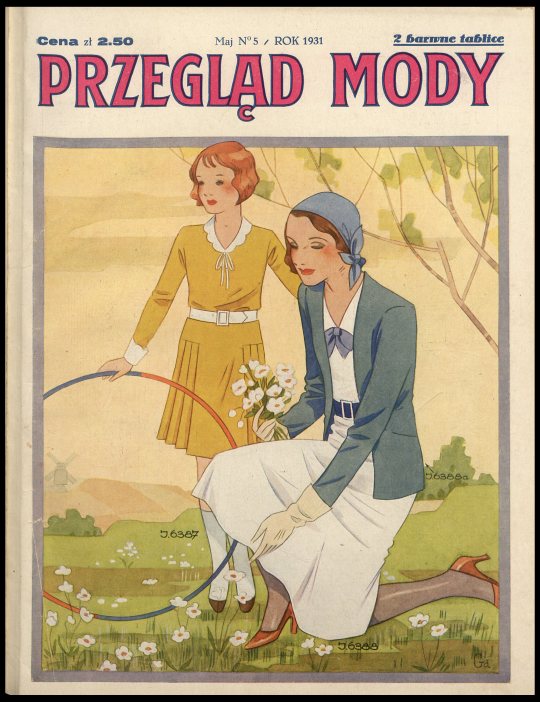

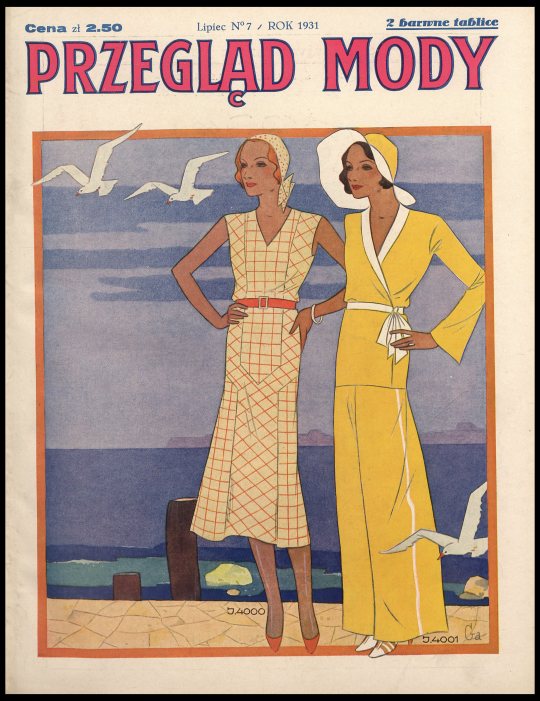
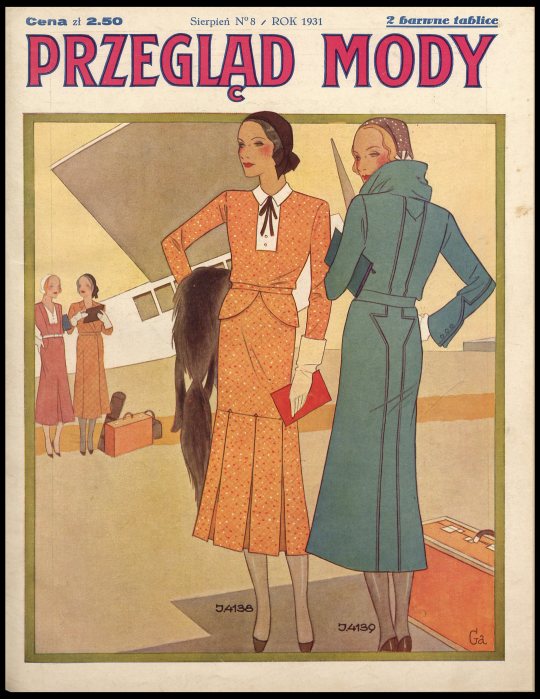


This series of Gert Gagelmann of aquarell covers are for the Polish edition of Modenschau, which is titled Przegląd Mody. Issues Number 1, through Number 9, and Number 12 are all illustrated by Gagelmann. As in the German Modenschau, the sewing pattern identification numbers are shown beside the figures.
8 notes
·
View notes
Photo

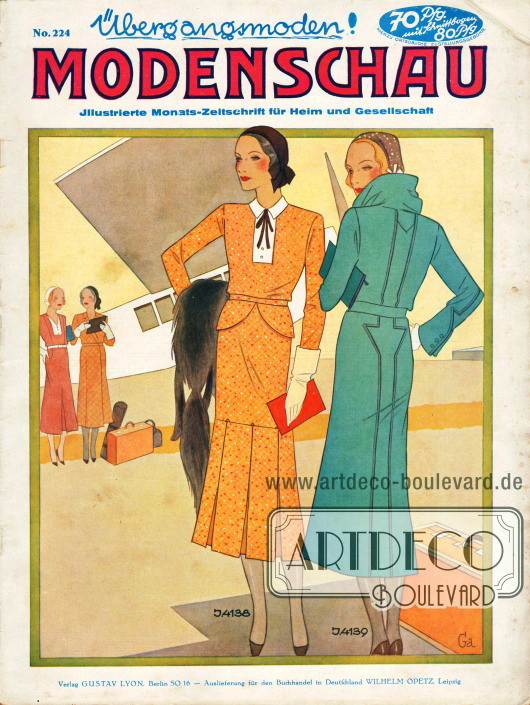
Modenschau Issues No. 213 and No. 224, above are covers illustrated by Gert Gagelmann. More examples of Gagelmann’s cover illustrations can be found on the ‘Art Deco Boulevard’ website, www.artdeco-boulevard.de
The Modenschau (fashion show) issue No. 213 from September 1930 is complete, with all pages posted on the site. The around 120 models show practical day and street dresses, dressy afternoon and visiting dresses, autumn costumes and coats as well as the first evening dresses for the ball season 1930-31.
On the September 1930 cover, below the hem of the largest figure’s skirt is the number ‘J. 5354.’ This is the sewing pattern number for the outfit illustrated, and it could be ordered from the publisher Gustav Lyon. The identification of sewing pattern numbers is a feature of the fashion plates in every issue of Modenschau.
1 note
·
View note
Photo


The “Sollux-Lampe – Original Hanau!” advertisement at top appeared twice in the 1925 issues of Die deutsche Elite magazine with the illustration done by Gagelmann. Even by the mid-1920s publications still relied heavily on drawings or paintings more so than on photography. Although thought of primarily for his fashion illustrations, Gert’s versatility as an artist can be seen in his mechanical drawing abilities.
The advertisement touts “The small Sollux lamp Original Hanau, in contrast to the well-known Hanau quartz lamp "Artificial Ceiling Sun,” does not produce cold ultraviolet rays but rather glowing heat rays, which produce a soothing, lasting, very deep hyperemia (blood overcrowding). If you want to learn more, ask your doctor and read the writings “Die Hyperӓmichehandel” by Dr. Heusner, hehftel GM. 0.20 - [or] “The Art of Rejuvenation by Zarathustrabis Steinach ”by Dr. von Boronsini.”
Below the ad is one of several illustrations Gagelmann completed for a series of postcards. This one is titled “Die Ärtzin,” and is part of the “Frauen Schaffen Für Euch” group published by Erich Gutjahr, Bildverlag, Berlin in 1943.
These illustrations are paired together as it seems Gagelmann remembered his 1925 rendering of the Sollux lamp, and included it the scene with the mother and child visiting the doctor. The image of the lamp being flipped to point left and used as a compositional feature.
It is also interesting to compare Gagelmann’s handling of the figures in the 1943 postcard, with those of the stylized forms in his fashion illustrations of the mid-1920s. The naturalistic poses, the watercolor techniques seeming much more polished, yet still evoking the feeling we are seeing fashion models in the doctor’s office setting.
1 note
·
View note
Photo


Illustration and enlargement from Die deutsches Elite magazine, 1925, by Gert Gagelmann. Gagelmann frequently accessorized the figures in his watercolors with bracelets. Pairs of white bracelets can be noted in Gagelmann’s contribution to the Frauen Schaffen für Euch postcard series published by Erich Gutjahr, Bildverlag, Berlin in 1943.
Unless otherwise indicated, all the Die deutsches Elite images on this site come from the archives of the Staatsbibliothek zu Berlin, and scanned by Bibliocopy DigiService.
3 notes
·
View notes
Text
Gert Gagelmann Timeline
Timeline:
24 Apr 1902, Gert Gagelmann born, Halle, Sachsen-Anhalt, Deutschland (Note 1)
1921, (age 19) completed studies with distinction at the Reimann School in Berlin
1921, (age 19) his illustrations appear in “Der Brummer” (Note 2)
25 Sep 1924, Gert Gagelmann and Ilse Ziegler married in Berlin (Note 3)
1924, (age 22) his illustrations appear in “STYL” (Note 4)
1925, (age 23) in May he took over the artistic direction of the magazine die Deutsche Elite. The 1925 issues of the magazine list Gus W. Nedowitz, ‘Herausgeber’ (editor), and G. Gagelmann, ‘Leitung’ (management). Address: Bülowstraße, Nr. 2, Berlin W 57. (Note 5)
1926-1930, (age 24-28) his illustrations appear in Illustierte Textil-Zeitung (ITZ), [Illustrated textile newspaper] (Note 6)
1926-1927, and 1929, Ilse Gagelmann is employed by “ITZ” and her art works appear in the magazine
1928, (age 26) resided Birkbuschgarten Straße, Berlin, DE, occupation Maler und Graphiker (artist/graphic artist) (Note 7)
1928-1929, (age 26-27) his illustrations appear in “Die Dame” (The Lady) (Note 8)
1929-1931, (age 27-29) numerous art deco style covers by Gagelmann appear on the German illustrated fashion magazine “Modenschau” (Fashion Show) (Untertitel: Illustrierte Monats-Zeitschrift für Heim und Gesellschaft) (Note 9)
1928-1932, (age 26-30) resided Birkbuschgarten Straße 7, Berlin, DE, occupation Maler und Graphiker (Note 7)
19 Jul 1933, Gert Gagelmann and Ilse (Ziegler) Gagelmann divorce, Wilmersdorf, Berlin, DE
1934-1935, (age 32-33) resided Halsee, Albrecht-Achilles Str. 10, Berlin, DE, occupation Mal. u. Graphiker (Note 7)
1936-1937, (age 34-35) resided Fredericia Str. Berlin, DE, occupation Mal. u. Graphiker (Note 7)
1938-1941, (age 36-39) resided W. 50 Schaperstraße 2. 3, DE, occupation Mal. u. Graphiker (Note 7)
1938, (age 36) publishes drawing of “The Italian Girl”(Note 10)
1943, (age 41) the "Frauen Schaffen für Euch,” postcards are published (Note 11)
14 Apr 1950, (age 48) member, Berufsverband der bildenden Künstler [BBK], professional association of visual artists in West Berlin, DE
1950-1958, (age 48-56) resided Wilmd Geisenheimer Str. 42, Berlin, DE, occupation Redakteur und Pressezeichner (editor/press illustrator) (Note 7)
1958, (age 56) November, a letter from BBK to Herr Gagelmann’s address in Berlin / Wilmersdorf, came back with the note "unknown, moved.”
1964, (age 62) died, Köln-Lindenthal, DE
Note 1: Family of Gert Gagelmann, Father: Georg Friedrich August Gagelmann, B: 15 Nov 1860; D: 15 Apr 1956; Mother: Emma Hermine Gagelmann, B: 6 Apr 1866; D: 14 Aug 1942; Sister: Gertrud Emma Gagelmann, B: 10 Mai 1890; D: unk; Sister: Karoline Hildegart Gagelmann, B: 2 Juli 1891; D: unk; Sister: Emma Luise Margarete Gagelmann, B: 12 Nov 1892; D: unk; Sister: Emma Luise Margarete Gagelmann, B: 12 Nov 1892; D: unk; Sister: Emma Luise Margarete Gagelmann, B: 12 Nov 1892; D: unk; Sister: Leoni Lisbeth Irma Gagelmann, B: 3 Apr 1894; D: unk; Sister: Luba Editha Elfriede Gagelmann, B: 4 Okt 1900; D: unk.
Note 2: “Der Brummer,” a “witty, funny, comic paper” published weekly 1919-1930. Lustige Gesellschaft, publisher, Berlin SW 11; Druck: Lindendruckerei un Verlagsgesellschaft m.b.H., Berlin NW 6
Note 3: Ilse Ziegler, born 26 Feb 1902, Neumarkt, Province of Silesia, Prussia (now Poland). After her divorce, Ilse immigrated to England in about 1939. She married Karl H. Schmidt in 1941. She was naturalized a British citizen in 1949. She died in London in 1978.
Note 4: “STYL” subtitled “for fashion and pleasant things in life,” had 17 issues 1922-1924. STYL editors: Ludwig Sternaux and R.L. Leonard. Publisher: Erich Reiss, Berlin, ab 1923 Verlag Otto von Holten, Berlin C19.
Note 5: “Die deutsche Elite,” the ‘newspaper’ of society, 1924-1930. Address, 1930 Verlag Paul Endler, Berlin SW 68, Ritterstrasse 69; ab Mӓrz/April 1930 Verlag Otto Dreyer, Abteilund Die deutsche Elite, Berlin SW 61, Eylauer Straße 3, published monthly, circulation about 12,000.
Note 6: “Illustierte Textil-Zeitung” (ITZ), a weekly supplement to a textile newspaper, published: 1926-30, 1931 (Nr. 29/30, 33/34, 39/40), 1932, 1933 (Jan.-Mӓrz). Address: Textil-Verlag G.m.b.H., Berlin SW 68, Wilhelmstraße 9.
Note 7: Amtliches Fernsprechbuch fur Berlin un Umgegend (Official telephone book for Berlin and the surrounding area).
Note 8: “Die Dame,” Ullstein publishing house, 1918 – April 1933, Berlin, and Wien, Published every 14 days; elegant fashion, society, and culture magazine.
Note 9: “Modenschau,“ (Fashion Show, Subtitle: Illustrated Monthly Magazine for Home and Society), Verlag Gustav Lyon, Berlin SO16, Ausliefarung für Buchbandel in Deutschland, Wilhelm Opetz, Leipzig.
Note 10: “The Italian Girl,” this pencil or crayon drawing is one of the few known and attributed Gagelmann works, which are rendered in this style and medium. Others like it may exist, but are not yet discovered.
Note 11: "Frauen Schaffen für Euch,” Erich Gutjahr, Bildverlag, Berlin, NW 40, Lehrter Straße 40.
3 notes
·
View notes
